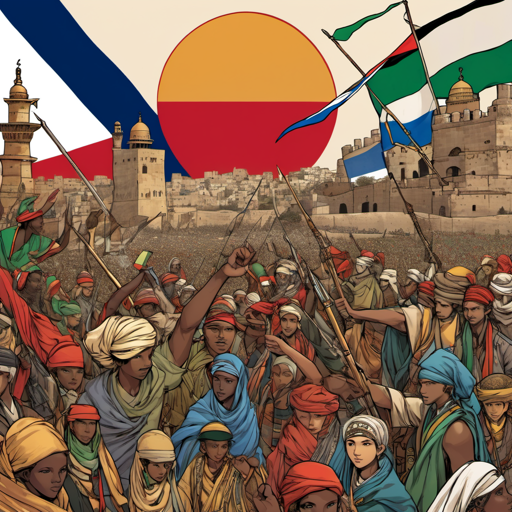The history of Palestine and Israel is marked by a series of conflicts, wars, and struggles that have shaped the region for thousands of years. This tale of strife is a complex narrative of territorial disputes, cultural clashes, and religious conflicts. Here, we reached into ten devastating moments in the history of this enduring conflict.
1. The Ancient Struggles
The earliest recorded conflicts in the region date back to ancient times when various peoples, including the Canaanites, Egyptians, and Israeli, vied for control. The establishment of the Kingdom of Israel around 1000 BCE, under kings like David and Solomon, set the stage for future disputes over the land.
2. Roman Conquest and Jewish Revolts
In 63 BCE, the Romans conquered the region, leading to significant turmoil. The Jewish revolts against Roman rule, particularly the Great Revolt (66-70 CE) and the Bar Kokhba Revolt (132-135 CE), resulted in massive destruction and the eventual expulsion of Jews from Jerusalem.
3. The Crusades
The medieval period saw the rise of the Crusades, a series of religious wars initiated by European Christians to reclaim Jerusalem from Muslim control. The First Crusade (1096-1099) led to the capture of Jerusalem, but subsequent conflicts, including Saladin’s recapture of the city in 1187, perpetuated a cycle of violence and instability.
4. Ottoman Rule and the Decline of Empires
The Ottoman Empire controlled the region from the 16th century until World War I. During this period, the land experienced relative stability, but the decline of the Ottoman Empire in the early 20th century created a power vacuum that set the stage for modern conflicts.
5. The British Mandate and Rising Tensions
After World War I, Britain took control of Palestine under a League of Nations mandate. The Balfour Declaration of 1917, which supported the establishment of a Jewish homeland in Palestine, exacerbated tensions between Jewish and Arab communities, leading to violence and unrest.
6. The UN Partition Plan and the Creation of Israel
In 1947, the United Nations proposed a plan to partition Palestine into separate Jewish and Arab states. The plan was accepted by Jewish leaders but rejected by many Arabs. The declaration of the State of Israel in 1948 sparked the first Arab-Israeli war, resulting in significant displacement and loss of life.
7. The Six-Day War
In 1967, escalating tensions led to the Six-Day War between Israel and neighboring Arab countries. Israel’s swift victory resulted in the occupation of the West Bank, Gaza Strip, and East Jerusalem. The war dramatically altered the region’s political landscape and intensified the conflict.
8. The Yom Kippur War
The 1973 Yom Kippur War saw a surprise attack on Israel by Egypt and Syria. Although Israel eventually repelled the attack, the war highlighted the ongoing volatility and the deep-seated hostilities between Israel and its neighbors.
9. The First and Second Intifadas
The First Intifada (1987-1993) and the Second Intifada (2000-2005) were Palestinian uprisings against Israeli occupation. These periods were marked by widespread violence, loss of life, and further entrenchment of the conflict. Both intifadas had profound impacts on the lives of civilians and the political dynamics of the region.
10. The Ongoing Struggle for Peace
Despite numerous attempts at peace, including the Oslo Accords and various international efforts, a lasting resolution to the conflict remains elusive. The continued expansion of Israeli settlements, security concerns, and political divisions within both Israeli and Palestinian leaderships contribute to the ongoing strife.
Conclusion
The history of Palestine and Israel is a tragic tale of recurring conflict and suffering. Each devastating moment in this long history adds layers of complexity to an already intricate and deeply rooted struggle. Understanding these historical events is crucial for anyone seeking to grasp the profound challenges that continue to affect this troubled region. The path to peace remains fraught with difficulties, but acknowledging and learning from this tumultuous history is a vital step toward a more hopeful future.

